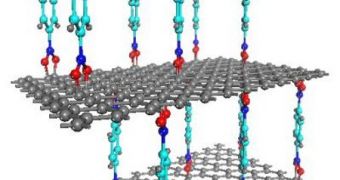Electric vehicles are at this point our only option, if we are to avert the effects of climate change and global warming. Regular cars produce too much greenhouse gas emissions, and they need to be eliminated soon. But replacing them is not very easy because of the high costs and low driving ranges associated with battery-powered vehicles. In order to fix these issues, experts say that advanced, hydrogen-powered fuel cells would need to be produced, but this goal seemed elusive until now.
The secret to effectively changing the world lies in finding a material capable of capturing, storing, and releasing hydrogen within certain parameters. Such a material has been the target of many research groups for a number of years, but thus fat little success has been registered in this quest. Now, a team of scientists from the US National Institute of Standards and Technology (NIST) Center for Neutron Research proposes a new approach to storing the chemical compounds.
The investigators, who were joined in their study by colleagues at the University of Pennsylvania, say that using layers of graphene to trap hydrogen could further fuel cell research considerably. Graphene is the most promising carbon compound out there today. Unlike graphite and diamond, graphene is only a single-atom-thick, and features a honeycomb-like structure. It has extremely interesting mechanical, physical and chemical properties, and experts have been investigating it exhaustively ever since it was first developed, not six years ago.
What the NIST/UP collaboration managed to produce was a graphene-oxide framework (GOF), a material capable of effectively accumulating hydrogen. However, the properties of this structure have yet to be fully understood, the researchers say. “No one else has ever made GOF, to the best of our knowledge. What we have found so far, though, indicates GOF can hold at least a hundred times more hydrogen molecules than ordinary graphene oxide does. The easy synthesis, low cost and non-toxicity of graphene make this material a promising candidate for gas storage applications,” says Taner Yildirim, who is a theorist at the NIST.
“We are going to try to optimize the performance of the GOFs and explore other linking molecules as well. We want to explore the unusual temperature dependence of absorption kinetics, as well as whether they might be useful for capturing greenhouse gases such as carbon dioxide and toxins like ammonia,” adds NIST scientist Jacob Burress.

 14 DAY TRIAL //
14 DAY TRIAL //